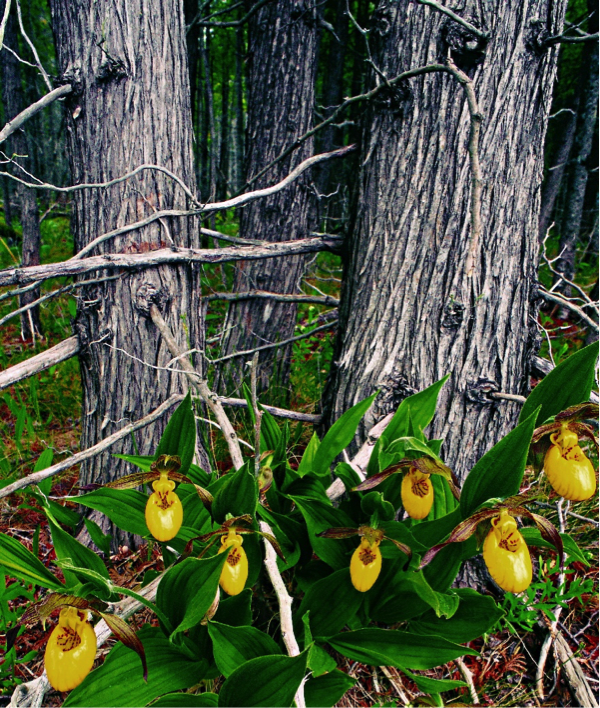Into the Woods
 Being in the natural wood home business, particularly with our 71 year history, we attract an amazingly wide and varied category of informational inquiry caller – “I am an appraiser and need help appraising a log home”, “I would like to talk to someone about some log home decorating ideas, please”, “Tell me about chink”, “Do you all know of log homes to rent out West?”, “Do you have milk on sale this week?” (Town&Country grocery store chain near us…), “I just bought a Cedar home and wanted to ask you about what kind of finish I should use”, and, surprisingly, “I’m just wondering if I could ask you a few questions about maintaining our woods?”….three calls this past week alone. We do know a bit about that subject. A quick primer…
Being in the natural wood home business, particularly with our 71 year history, we attract an amazingly wide and varied category of informational inquiry caller – “I am an appraiser and need help appraising a log home”, “I would like to talk to someone about some log home decorating ideas, please”, “Tell me about chink”, “Do you all know of log homes to rent out West?”, “Do you have milk on sale this week?” (Town&Country grocery store chain near us…), “I just bought a Cedar home and wanted to ask you about what kind of finish I should use”, and, surprisingly, “I’m just wondering if I could ask you a few questions about maintaining our woods?”….three calls this past week alone. We do know a bit about that subject. A quick primer…
Most of us with stands of timber, me included, don’t practice as good of woodlot management as we probably should. That’s unfortunate, because tending a woodlot can not only double timber growth and result in healthier trees, but can also increase wildlife habitat, improve water quality, and create opportunities for outdoor recreation — all while increasing the value of the land.
The first step is to realize that woodlots are not self-tending. In fact, properly pruned and tended trees can live up to twice as long as their untended counterparts. Well-managed stands of trees are more resistant to fire, wind, disease and will also promote new growth.
The second step is to consult your state or USDA Forest Service for assistance in planting, maintaining or rebuilding and harvesting your woods. These organizations can provide you with publications and advice about how to achieve your particular goals.
In terms of cutting/harvesting, our guys suggest one cut the following types of trees, in the following priority:
Dead trees that are not wanted for wildlife habitat. Standing deadwood provides an immediate source of dry firewood — something you’re likely looking for. Leave two to four dead trees per acre for wildlife habitat. Dead trees provide nesting sites for woodpeckers, which help control insects and keep trees healthy. They also provide observation towers for hawks and owls, which help control the population of small animals.
Poor-quality trees to make space for better trees. Poor-quality trees include deformed, diseased, damaged, or otherwise defective trees, along with trees that produce poor-quality firewood. All wood can be cut, split if necessary, and burned. Process and use these cuttings for firewood until you’re ready to start harvesting prime, healthy trees. Make sure five to six species of trees are growing in your woodlot. This reduces your lot’s vulnerability to a disease or infestation, as these typically affect one species.
Full-grown trees of good firewood species. Removing full-grown trees allows space for younger, healthier, faster-growing trees.
Young trees to be thinned. Thinning young trees allows the remaining fewer trees to grow faster. In a properly thinned stand, tree growth may double or even triple. Continue thinning every three to five years to ensure that the remaining trees have enough growing space as they get larger.
Additional harvesting may result from cuts made through the lot to create access paths, roads or to construct an outbuilding.
Harvest wood in the fall or winter when trees are producing less sap. Split the wood at the time it is cut to promote rapid drying. You’ll need a chain saw and a wood splitter. A gas-powered, hydraulic wood splitter is the easiest way to split wood, but if you’re in reasonable physical condition, a good splitting maul will do the job just as quickly and much more cheaply and quietly. Finally, you’ll need a cart, wagon or ATV/UTV to carry the wood from your woods to your wood pile. Ideally, the pile should be located where it is exposed to sun and wind for quick drying, sheltered from rain and close to your house for easy access. The brush remaining after harvest can be left in the woods to provide a habitat for wildlife and nutrition for the soil. Or, you can run brush and small limbs through a wood chipper and use the resulting chips for mulching flower beds and gardens, surfacing paths, or processing into compost.



